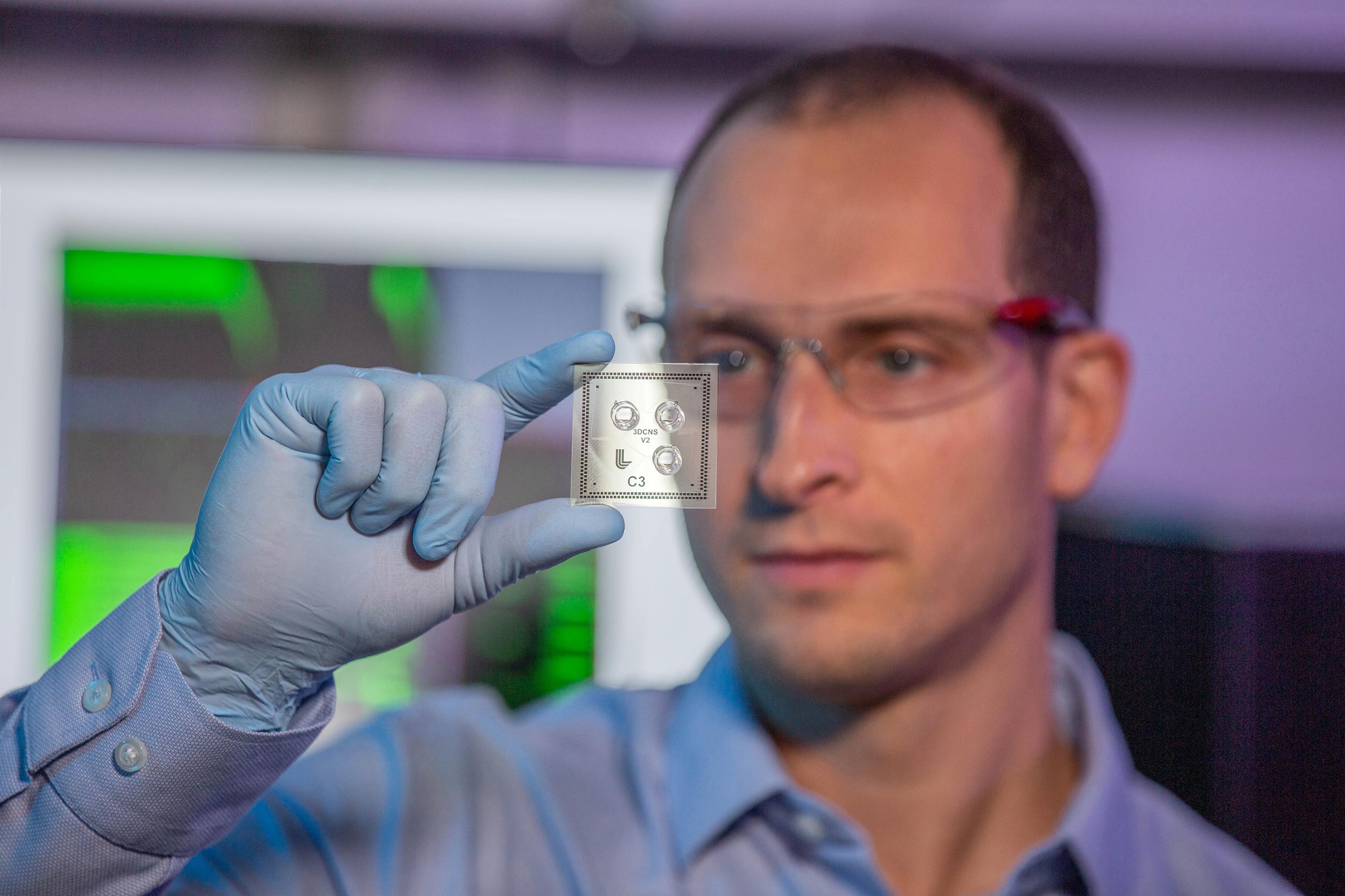Commonly referred to as "lab-on-a-chip" technology, microfluidic devices are transforming detectors and diagnostics in the environmental, chemical, biological, medical, and pharmaceutical fields. Generally speaking these devices quantify, react, and help to characterize and detect samples dissolved in gases and liquids. What makes these devices unique is that they are on the micro-scale and can analyze extremely small quantities of sample with very high levels of sensitivity. They can dramatically reduce reagent costs, minimize processing times, and provide very high resolution. At this point in the detection and diagnostics industry there is a continuing effort to develop devices with lower limits of detection so that even more minute quantities of a target can be detected successfully.
Lawrence Livermore National Laboratory scientists have developed a signal enhancing microchip apparatus and method that enhances a microfluidic detector's limits by magnetically focusing the target analytes in a zone of optical convergence. In summary, samples are associated with magnetic nanoparticles or magnetic polystyrene coated beads and moved down the flow channels until they are trapped in a magnetic trap-zone. The concentrated sample is then analyzed and provides up to a thousand fold signal enhancement for optical detection. Reaction volumes required are drastically reduced which improves sensor signal to noise ratio. (Sample amounts needed are one million times smaller than volumes used in current commercial instruments).
In addition to providing an enhanced signal, the LLNL scientists also provide methods to conduct complex multi-step sequential reactions all while the targeted molecules are trapped within the imaging and detection zone. This is done by the LLNL developed wash and buffering steps that remove reaction by-products, bring in new reagents, and optimize the pH if desired. Optimal buffer pH's and temperatures can also be determined and changed at different times and in different orders for efficient multi-step reactions and detection, for example, to improve fluorophore emission and detector signal in real-time.
- Up to a thousand-fold signal enhancement
- Much greater sensitivity and lower limits of detection
- Sample volumes required for molecular diagnostic analysis such as PCR are up to one million times smaller than current commercial instruments
- Coupling of bead-based sample enrichment with focused optical detection
- Reduction in processing times by an order of magnitude with analysis steps cut in half
- Much greater reduction in costly reagent volumes than with standard MOEMS systems
- Allows for complex multistep reactions and optimization of fluorescent probe optical efficiency
- Several embodiments possible for microfluidic device design and methods (e.g. branched microtubule system for higher throughput)
- Detection of bacterial cells, viruses, nucleic acids, proteins, biomolecules, chemicals, explosive agents, and other micro-opto-electromechanical system (MOEMS) targets
- Detection via PCR analysis with beads in droplets (partitioned) or continuous systems
- Biowarfare detection and identification of bio-threat agents
- Public health and biomedical monitoring for outbreaks of infectious disease and pathogen infection
- Clinical testing, laboratory research, and forensics testing of biological fluids. (Used in automated processing, amplification, and detection of host and pathogen DNA, RNA, and proteomic signatures).
- High throughput genetic screening for drug discovery and therapeutics
- Food and beverage industry safety testing for contamination
- Uses in cell cytometry and viral cytometry
System has been tested and analyzed. Seeking partners to further develop the device either through a cooperative research and development agreement or work for others subcontract. System is also available for exclusive or nonexclusive licensing.
- U.S. Patent 8,189,186
- Technology has been featured in the following publications:
1) "New system detects small samples for big gains," NewsLine, Vol. 32, No. 39, Nov. 16, 2007.
2) Cover Story: "On-Chip, Real-Time, Single-Copy Polymerase Chain Reaction in Picoliter Droplets," by N. Reginald Beer et al.; in Analytical Chemistry, Vol. 79, No. 22: Nov. 15, 2007.


